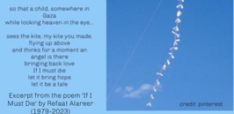Book Review: The New Humanitarians in International Practice: Emerging Actors and Contested Principles

The New Humanitarians in International Practice: Emerging Actors and Contested Principles edited by Zeynep Sezgin and Dennis Dijkzeul. Abingdon and New York: Routledge, 2016. 384 pp, £95 hardcover 9781138829718
In today’s world the classical humanitarian system, with its principles that for decades have served as the cornerstones of humanitarian action, is increasingly coming under pressure. The changing nature of conflict, the rapidly growing needs, the blurring lines between civilian and military actors, the abuse of aid and the widespread disrespect for human rights and humanitarian law, are just some among many phenomena that threaten the application of humanitarian principles in everyday humanitarian practice. Well-established humanitarian actors are desperately trying to keep up with the speed at which the world is changing and are contemplating how best to deal with the challenges and contradictions of today’s crisis response. While these traditional humanitarian actors are trying to find pragmatic answers to the problem that key principles are hard to apply, new actors have entered the humanitarian arena – and they come with their own ideals, principles, mechanisms and approaches for coping with contemporary challenges.
By providing an overview of these various ‘new’ players involved in humanitarian action, The New Humanitarians in International Practice provides novel, empirically grounded insights into the diversified, contemporary humanitarian system. The book contrasts emerging and traditional actors, and reflects upon the ability of non-traditional humanitarian protagonists to change and reconstruct the international assistance regime. In this context the volume analyses the actions and approaches of new donors, such as Turkey and India, but it also reflects on the increasing role of local, regional, multi-mandate and faith-based organizations involved in delivering humanitarian action. Next to these players, the book sheds light on contested actors like armed humanitarians and for-profit organizations, but also on lesser known humanitarian actors, such as diaspora organizations that are crucial but overlooked elements of the humanitarian assistance framework. By outlining the key characteristics of these actors the book manages to capture the fragmentation that the humanitarian system is faced with. This fragmentation of the international humanitarian system, however, is not as ‘new’ as the title The New Humanitarians in International Practice might suggest. As the authors point out, some of the actors titled as ‘new’ in the volume, such as regional or faith-based organizations, are not novel, but they are now playing a greater role and are entering the mainstream. Some have been involved in humanitarian action for a long time. In fact, as the volume rightly admits, the increasing diversification of the international aid system is not a recent phenomenon, but is a continuation of the evolution of the humanitarian system, which has gone through various stages since the rise of international peace movements in the 19th century.
This fragmentation of the international humanitarian system, however, is not as ‘new’ as the title The New Humanitarians in International Practice might suggest. As the authors point out, some of the actors titled as ‘new’ in the volume, such as regional or faith-based organizations, are not novel, but they are now playing a greater role and are entering the mainstream. Some have been involved in humanitarian action for a long time. In fact, as the volume rightly admits, the increasing diversification of the international aid system is not a recent phenomenon, but is a continuation of the evolution of the humanitarian system, which has gone through various stages since the rise of international peace movements in the 19th century.
Although the non-traditional actors mentioned in the volume might not necessarily all be ‘new’, their role in humanitarian action is increasing and they are gaining influence. Yet this has still not been well documented, and here lies the great strength of the book. By bringing together scholars and practitioners that analyze non-traditional humanitarian actors through various theoretical and empirical lenses and from different perspectives, Sezgin and Dijkzeul fill an important research gap. The volume helps the reader to understand that, next to the traditional humanitarian actors, there is a multitude of players in the middle and on the edges of the humanitarian arena that can have an enormous impact on humanitarianism.
By providing this crucial critical analysis of emerging actors the book does away with some of the existing myths around humanitarian action. For instance, Hilhorst and Pereboom in their article on multi-mandate organizations, point out that humanitarian action is driven by an ideal-type image that stands in harsh contrast to the empirical realities on the ground. While the single-mandate principled organization only corresponds to a handful of agencies among thousands of multi-mandate organizations, the former and their principles continue to dominate humanitarian policy and debate.
The New Humanitarians in International Practice also breaks in certain parts with the Western-centric, traditional way of approaching humanitarianism. Several authors emphasize that instead of dismissing emerging non-traditional actors and only outlining their weaknesses and deviations from existing standards and norms, one should also take into account their strengths and the added value they bring to the humanitarian system. This bold perspective makes the book a highly interesting read. The case study on Turkey’s presence in Somalia, for instance, outlines the competitive advantage Turkey has had as a humanitarian actor in Somalia. The author notes that there are a number of lessons that traditional aid donors could learn from the Turkish experience in Somalia and other aid contexts, such as building enabling and constructive relationships with local populations.
Other articles of the volume equally analyze the benefits that emerging actors can bring to the humanitarian system. The chapter by Carpenter and Kent on the military and the private sector, for instance, argues that the ‘military may be viewed as a learning asset with expertise, innovations and capacities that can be utilized by humanitarian actors to meet needs more effectively’ (p. 160). The chapter on international Muslim NGOs explains the role Islam can play in gaining access to certain target groups, or as a tool to improve the implementation of aid activities. Such out-of-the-box thinking brings a fresh, new perspective to the well-established debate circulating around the humanitarian principles and space. The book thereby challenges familiar assumptions that are made by humanitarians about ‘collaboration, cooperation and partnerships, namely that those outside the traditional sector have to fit within a tried and tested humanitarian framework’ (p. 159). The conclusions use institutional theory to show that the principle of humanity is so broad that it can be combined rather easily with other principles, varying from sovereignty to the profit-motive, and not just with impartiality, neutrality, and independence. As a result, some of the emerging non-conventional actors can work well with the traditional humanitarian actors, whereas many others do not. The volume concludes that the old cooperation paradigm based on the traditional principles still plays a central role in humanitarian action and serves as a normative yardstick: but the book also emphasizes the need to look behind ideology and to face real politics.
For contemporary humanitarians as well as humanitarian studies scholars and students, Sezgin and Dijkzeul’s book should be required reading as it provides much-needed food for thought concerning the role and limitations of traditional humanitarian actors and their uneasy relationship with structures of the Global South and non-traditional humanitarian players. Even though one might not agree with all of the arguments of the various authors in this volume, the reader will enjoy the variety of viewpoints expressed by the heterogeneous group of contributors.
Claudia Breitung is a project manager and senior researcher at the Bonn International Center for Conversion (BICC). Her expertise lies in the field of disarmament, demobilization and reintegration (DDR), security sector reform (SSR) and humanitarian assistance in conflict zones.


